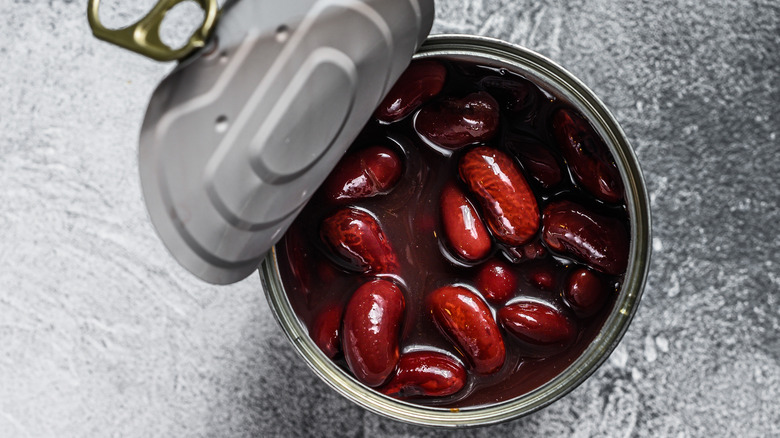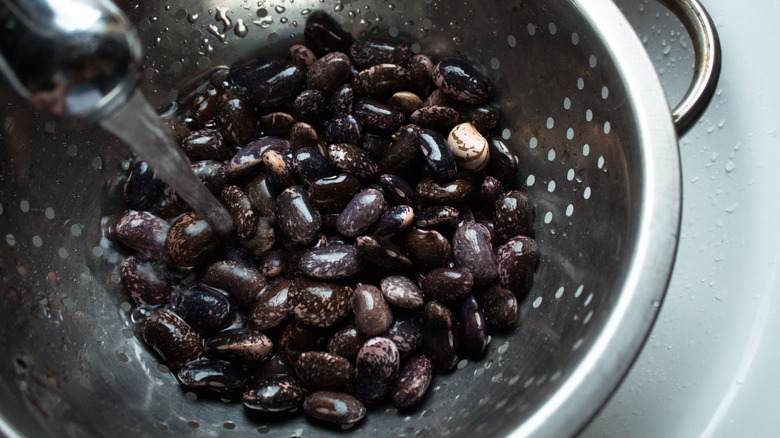Is It Dangerous To Eat The Foam In Canned Beans?
Canned beans are a great ingredient to keep stocked in your pantry. They are affordable, convenient, and can be used in everything from sweet potato tacos to protein-packed smoothies. If you're not familiar with all of their quirks, though, they can be a little bit off-putting — for example, the thick foam that appears when rinsing or cooking them. While you may not enjoy the appearance of beans that look like they've just come out of a bubble bath, rest assured that the foam is completely normal and safe to eat.
Beans, and legumes more generally, tend to foam up because of their chemical makeup. They contain starches and proteins that can cause this phenomenon to some degree, but the larger cause is the presence of saponins — a compound that causes soapy bubbles to appear when introduced to liquids like water. Saponins, just like starches and proteins, are naturally-occurring and entirely harmless. The foam is also relatively tasteless, so you don't have to worry about it impacting your tastebuds either.
How to reduce foam when cooking
If foamy beans don't put you off, there are few preparations you need to make to use canned beans beyond draining them, if the recipe calls for it. However, if you still find the foam unappealing, you can take several steps to reduce it. Rinsing the beans in the sink prior to cooking will wash away some of the starch and protein that can contribute to the creation of foam. As an added benefit, doing so also reduces the amount of sodium in the beans, which can be quite high.
None of this will eliminate the occurrence of foam entirely; however, it is easy to remove once it appears. You can use a spoon, a spatula, or even a specialty skimmer tool to take the foam off of the top of the water after it appears. You can then dispose of the foam or set it aside to use in other dishes, since aquafaba (the liquid from soaked beans, both foamy and not) can be a great asset in many recipes.

